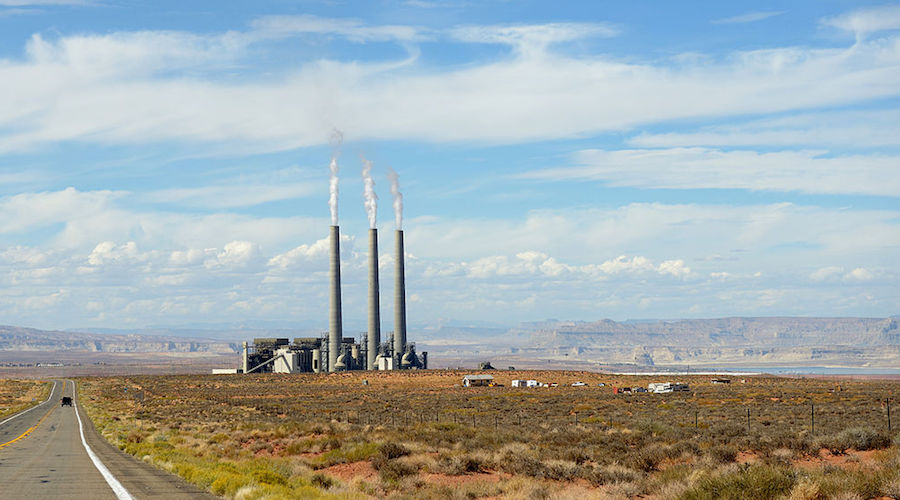Main customer of Arizona coal plant goes green, ignoring Interior Dept

The main buyer of electricity from an Arizona coal plant on the verge of closure said on Friday it will instead source its electricity largely from a solar power project, ignoring an appeal by the U.S. Interior Department to buy more power from the plant to keep it open.
The Trump administration has been waging a broad effort to keep aging coal and nuclear plants from retirement, arguing that their closure would constitute a threat to national energy security.
On Friday, the board of the Central Arizona Project (CAP), a major electricity consumer that supplies water to a large swath of Arizona, voted to sign a 20-year agreement to buy power from a solar project and also agreed to a five-year power deal with utility Salt River Project for electricity from a variety of sources.
The vote came despite a plea from the head of Interior’s Bureau of Reclamation, who last Friday wrote to board members to say that a 1968 law gives Interior Secretary Ryan Zinke power to require the CAP to buy energy from the Navajo Generating Station, or NGS, a 2,250-MW coal-fired power plant that is scheduled to close in 2019.
“With the 1968 Act in mind, the Department expects to consider several options going forward, including the feasibility of continued use of NGS-provided power,” the letter from Assistant Secretary for Water and Science Timothy Petty said.
Such a move would have delayed the plant’s closure.
But CAP officials disputed the assertion that they were required to buy power from the Navajo coal plant, which is closing due to competition from cheaper natural gas and renewable energy.
“CAP is not required by law to buy NGS power. CAP seeks a long-term, cost-effective, reliable and diverse power portfolio for the benefit of its water users,” Lisa Atkins, president of the Central Arizona Water Conservation District, was quoted as saying in the Arizona Republic newspaper.
A representative of the water organization was not immediately available for comment.
Despite the water project board’s decision, the Interior Department said it will continue to find ways to keep the Navajo Generation Station open.
“The Department of the Interior is committed to seek a post-2019 economically viable operation plan for NGS,” said spokesman Dan DuBray.
“Interior’s activities with myriad NGS stakeholders – including our discussions with the Navajo Nation, the Hopi Tribe, and the multiple tribes which rely on CAP water – are ongoing and productive,” he said.
Reporting by Valerie Volcovici in Washington Editing by Matthew Lewis.
More News
Barrick eyes 30% production growth by 2030
The company is also considering changing its name from Barrick Gold to Barrick Mining to reflect its changing production profile, chairman John Thornton said.
April 04, 2025 | 03:26 pm
Trump, tariffs and tin
Only one metal has escaped the tariff tsunami.
April 04, 2025 | 01:44 pm
{{ commodity.name }}
{{ post.title }}
{{ post.excerpt }}
{{ post.date }}



Comments